The terms dual diagnosis vs co-occurring disorders often describe situations where two or more conditions exist in the same person. There is a slight difference between these two terms, which untrained eyes couldn’t find. Usually, people with mental health issues turn to drugs or alcohol to cope, which can make their conditions worse over time. Because of this link, it’s common to face both a mental health problem and substance use disorder at the same time. As per SAMHSA, 32.9% of U.S. adults experienced both a mental health condition and substance abuse. Together, such situations are identified as a dual diagnosis or co-occurring disorder.
Addiction often brings a host of mental and physical health issues that can develop alongside substance abuse. Michael talks openly about his struggles with addiction in the HealingUS podcast. He shares the tough times, including withdrawal and relapses, and a pivotal moment when someone told him, “You don’t have to do this anymore.” Despite everything, Michael is thankful for his path to sobriety. Tune in to hear his inspiring story of resilience and recovery.
There are slight differences between dual diagnosis and co-occurring disorders, and people fail to notice. Knowing these differences can be really helpful, especially if you’re looking for support for both addiction and mental health issues. In this blog, we’ll explore the key differences between dual diagnosis vs co-occurring disorders, including signs, symptoms, and treatments.
Are you ready to overcome the struggles of addiction and mental health issues?
Dual Diagnosis vs Co-Occurring Disorders: Definition, Signs & Symptoms
When managing dual diagnosis vs co-occurring disorders, it’s important to grasp their subtle differences and similarities. Both terms refer to having mental health and substance use disorders at the same time, but they are applied in slightly different ways.
Dual Diagnosis
Dual diagnosis occurs when a person is diagnosed with two or more conditions simultaneously. While the term is commonly associated with having both a mental illness and a substance use disorder, it can also refer to any combination of physical health conditions.
For example, if a doctor finds a person has both high blood pressure and heart disease or cancer and diabetes, this would also be considered a dual diagnosis.
According to a study, only 7.4% out of 9 million affected individuals ever receive the appropriate, integrated treatment their dual disorders demand.
Each case of dual diagnosis is unique. Countless combinations of mental health disorders and substance use disorders can lead to a dual diagnosis. Some common examples include:
- Alcohol dependency and depression
- Cannabis use and bipolar disorder
- Opioid addiction and anxiety disorders
- Cocaine addiction and post-traumatic stress disorder (PTSD)
Signs & Symptoms of Dual Diagnosis
- Changes in appetite or weight
- Angry, violent, or reckless behavior
- Changes in sleep patterns, such as insomnia or sleeping too much
- High levels of tension or worry
- Difficulty concentrating
- Experiencing delusions or hallucinations
- Deep feelings of hopelessness, despair, or worthlessness
- Feeling anxious and needing to perform certain behaviors or rituals to relieve it
- Difficulty keeping a job or meeting responsibilities at work or school
- Struggling to maintain relationships due to behavior or mood swings
- Extreme changes in mood or energy
- Using drugs or alcohol to cope with any of these issues
Co-Occurring Disorders
Co-occurring mental health conditions and substance abuse affect nearly 9 million people each year.
A co-occurring disorder refers to two or more disorders happening simultaneously in an individual. This can include combinations of mental health disorders, substance use disorders, and medical conditions. Unlike dual diagnosis, which specifically focuses on the link between a mental health disorder and a substance use disorder, co-occurring disorders cover a more comprehensive range of possible condition combinations.
While co-occurring disorders vary from person to person, some combinations are more frequently seen, including:
- Depression paired with alcohol addiction
- Panic disorder alongside drug abuse
- Schizophrenia combined with a substance use disorder
- Post-traumatic stress disorder (PTSD) with marijuana use
Signs & Symptoms of Co-occurring Disorders
According to SAMHSA’s 2022 National Survey on Drug Use and Health, approximately 21.5 million adults in the United States have a co-occurring disorder. Here are some signs to observe:
- Falling behind at work.
- Showing sudden or unexpected changes in behavior.
- Taking more risks or acting recklessly.
- Noticeable changes in personality or overall behavior.
- Developing new or worsening physical health problems.
- Experiencing intense mood swings or emotional ups and downs.
- Using drugs or alcohol more to deal with problems.
- Struggling to maintain relationships.
- Showing signs of paranoia or irrational fears.
- Neglecting personal hygiene or self-care.
- Feeling constantly anxious or stressed out
According to SAMHSA, if one of these co-occurring disorders is left untreated, both can worsen and lead to more complications. The combination of these conditions often results in poor responses to traditional treatments and increases the risk of developing other serious health problems.
Dual Diagnosis vs Co-Occurring Disorders: Treatment & Approaches
While dual diagnosis vs co-occurring disorders might involve different conditions, their treatments align by addressing both mental health and substance use challenges together. Common approaches include:
Integrated Treatment Models
Address both mental health and substance use challenges together for better outcomes.
Personalized Patient Care
Tailor treatment plans to the individual’s unique needs to ensure more effective recovery.
Medication Management
Use medications strategically to manage withdrawal symptoms and mental health conditions.
Psychotherapy
Offer therapeutic support, like CBT or DBT, to help individuals understand and change their thoughts and behaviors.
Peer Support
Encourage participation in support groups like AA, NA, or DRA for shared experiences and mutual aid.
Family Therapy and Support
Involve family members in therapy and education to build a supportive home environment.
Lifestyle Changes
Promote healthy habits, including diet, exercise, sleep, and stress management, to support overall well-being and recovery.
According to Psychiatry, “Currently, there are no diagnostic criteria for dual diagnosis or co-occurring disorders.” However, the best way to treat dual diagnosis and co-occurring disorders is an integrated approach that addresses both mental health and substance use disorders at the same time. An integrated treatment plan might include medication, Individual therapy, Group therapy, Lifestyle changes, and Support groups.
Key Differences between Dual Diagnosis vs Co-occurring Disorders
The critical difference between dual diagnosis vs co-occurring disorders is in what they cover. Dual diagnosis is when a person has both a mental health disorder and a substance use disorder at the same time. On the other hand, co-occurring disorders refer to any combination of two or more disorders happening together. These can include mental health conditions, substance use disorders, or other medical issues.
Understanding this distinction is vital for identifying a person’s specific health needs and creating a well-rounded treatment plan.
Your Path to Recovery Begins Here
FAQs: Dual Diagnosis vs Co-occurring Disorders
Q: What is the difference between dual diagnosis vs co-occurring disorders?
A: Co-occurring disorders refer to having both a mental health disorder and a substance use disorder. Dual diagnosis is the term for treating both conditions at the same time.
Q: What does dual diagnosis mean?
A: Dual diagnosis means having both a mental health disorder and a substance use disorder, like depression and alcohol addiction.
Q: What does co-occurring mean?
A: Co-occurring means two conditions happening at the same time, such as a mental health disorder and a substance use disorder.
Q: Is OCD a co-occurring disorder?
A: Yes, OCD can be a co-occurring disorder, often appearing with other anxiety disorders.
Q: Is ADHD a co-occurring disorder?
A: Yes, ADHD often occurs with other conditions, such as learning disabilities or mental health disorders.
How Relevance Recovery Can Help?
Dealing with both substance abuse and mental health issues can be tough. That’s why it’s so important to get help from experts who understand these challenges. Whether you have a dual diagnosis or co-occurring disorders, getting the right diagnosis and treatment is key to feeling better. At Relevance Recovery, we have specialists who focus on these problems and are here to help you every step of the way. Let us help you find a treatment plan that aligns with your specific needs, goals, and preferences. Contact Relevance Recovery today to start your journey toward better mental health and well-being.









